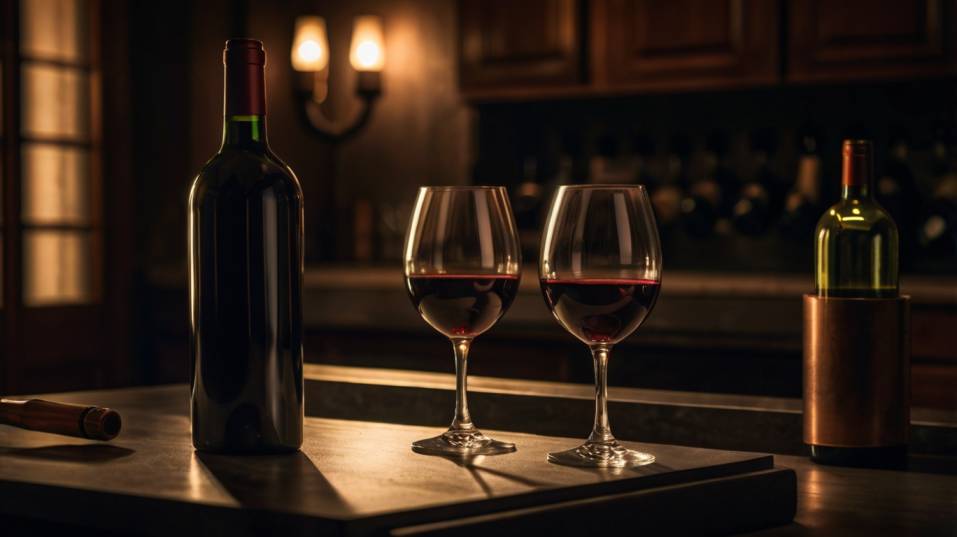Tasting at Home: A Simple 3-Glass Setup
Learn how a simple 3-glass tasting at home can sharpen your palate, build wine confidence, and make every sip more meaningful.

What if one simple habit could transform the way you taste wine forever? A single glass tells you how a wine feels—but three side by side?
That tells you why. With just three thoughtfully chosen pours, your kitchen becomes a tasting lab.
You’ll start noticing what really makes a wine stand out—and what doesn’t. No need for fancy gear or rare bottles. Just attention, contrast, and a little curiosity. This is where wine confidence begins.
The Power of Comparison
One wine on its own is a story with no context. You might enjoy it, maybe even love it—but it’s hard to know why. Is it the balance? The texture? The acidity? Without a reference point, those details stay vague.
Now put that wine next to two others—different grapes, styles, or places—and suddenly, patterns emerge. You notice structure more clearly.
You pick up on temperature-sensitive aromas. You feel how tannin hits differently across styles. You stop asking “do I like this?” and start asking “what is this showing me?”
This is how professionals taste. Not to show off, but to compare. That’s how they build memory, and that’s how you can, too.
Think of it like learning a new language. Listening to one voice in isolation only gets you so far. But hear different voices back to back?
You pick up the rhythm, the nuance, the contrast. The same principle applies to wine. Side-by-side tasting accelerates understanding—because it makes the invisible visible.
Choosing the Right Three
Forget formulas. There’s no perfect set of wines. But the key to any effective tasting is intention. Ask yourself: what do I want to understand better?

By Grape, Region, or Style
You might start with a classic varietal like Chardonnay or Syrah, and explore how it behaves in three different regions—cool climate vs warm, coastal vs inland, old world vs new.
Or you might pick three completely different grapes that are all light-bodied reds, to study texture and tannin.
By Winemaking Technique
Another approach? Focus on winemaking. Try one grape (say, Chenin Blanc), made three different ways—unoaked, lightly oaked, and fully barrel-aged. Notice what oak adds, and what it hides.
Whatever the theme, aim for contrast. Don’t just grab three similar supermarket wines. Think through what sets each bottle apart, and what you hope to discover by tasting them together.
Price doesn’t matter nearly as much as balance and clarity. Wines don’t need to be rare or expensive—they just need to be true to type. That gives your palate something real to work with.
The Setup: Small, Focused, Purposeful
You don’t need professional gear. Three identical glasses are ideal, but consistency matters more than branding.
If the shapes are similar, your tasting will be too. Pour about 2–3 ounces per glass—just enough to swirl, smell, and revisit over time.
Line up the wines left to right. Take your time. Smell first. Then sip. Then repeat. Pay attention to weight on the palate.
Note how the finish lingers (or doesn’t). Think about acid, not just as a flavor, but as a sensation—does it make your mouth water? Does it refresh?
Go back and forth between the glasses. That’s where things come into focus. One wine may suddenly feel rounder. Another, leaner.
Your brain starts building a sensory map—not just of flavor, but of structure. That’s where real confidence comes from.
Don’t stress about notes, but feel free to jot down a few words if they help you process. “Crisp,” “soft,” “grippy,” “bright”—anything tactile, anything real.
What You Learn (Without Realizing It)
With every 3-glass session, you’re building tasting memory—and that’s a game-changer. Over time, you’ll start recognizing signatures of place and style.
You’ll understand what elevates a wine and what flattens it. You’ll stop chasing labels and start chasing experiences.
You’ll also learn your own preferences in a more nuanced way. You may find you love higher acid whites more than you thought—or that your idea of “dry” isn’t quite what the bottle says.
That kind of clarity makes you a smarter buyer, a better host, and a more curious drinker.
This practice also sharpens your ability to taste with others. You won’t just say what you like—you’ll be able to describe why. That’s powerful. And it makes wine more social, more grounded, and more fun.
Over time, this habit shifts how you drink wine altogether. You move from drinking reactively to tasting intentionally. From passive enjoyment to active engagement.
Making It a Ritual
The beauty of the 3-glass setup is how simple it is to repeat. Once a week, or once a month—set aside an hour to taste with purpose.
It doesn’t need to be a production. It just needs to be present. Open the bottles a bit ahead of time. Taste alone, or invite a friend. Pick a theme, or let curiosity lead.
Keep the bottles afterward for pairing experiments or deeper exploration the next day. Use the leftovers to revisit what you learned—see how the wines evolve over 24 or 48 hours.
Some will fade. Some will blossom. That’s part of the education, too. You’re not studying wine—you’re living it.
Final Thoughts
A single bottle can show you pleasure. But three can show you perspective. The 3-glass setup isn’t about drinking more. It’s about tasting better.
With just a little intention, you can turn an ordinary evening into a personal tasting session that deepens your knowledge, sharpens your palate, and builds lasting wine confidence.
So try it. Choose three wines with a story to tell. Pour. Compare. Taste again. And let the glass teach you.
Because every time you taste with purpose, you get closer to understanding what you love—and why it matters. Tonight, pick three. Start now. Let your palate lead.




